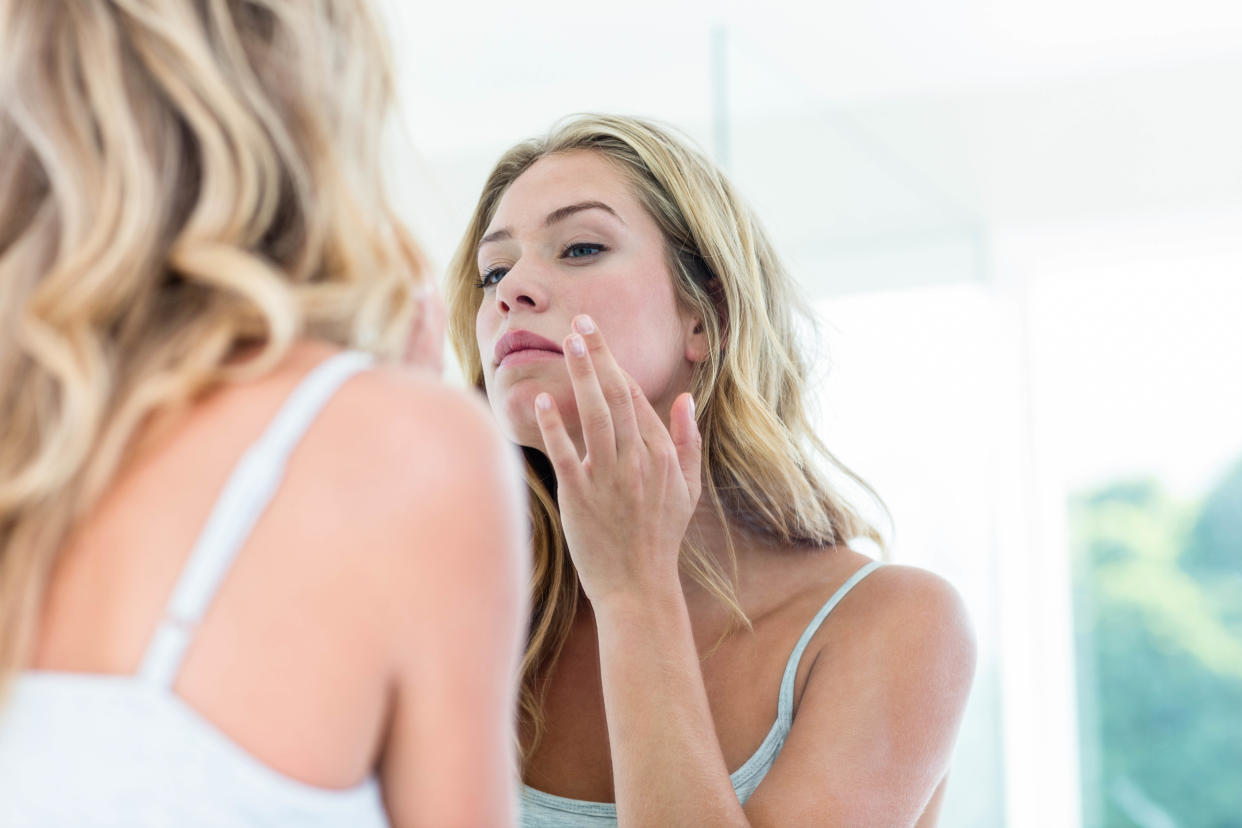A quarter of women suffer skin pigmentation - here’s how to combat it

A quarter of women develop skin pigmentation at some point in their life, a dermatologist has said.
Dr Emma Craythorne claims anything from pregnancy to oral contraception can trigger unsightly melasma.
Known as the “pregnancy mask”, brown or grey spots may develop along the cheeks, forehead, upper lip, nose or chin in response to hormonal fluctuations.
While not dangerous, many find the “incurable” condition distressing.
Read more: The 'Beauty And Uniqueness' Of Vitiligo Captured In Photo Series
Melasma is thought to come about when pigment-producing cells in the skin called melanocytes overproduce the pigment melanin.
“Melanocytes become unstable because of oral contraception, pregnancy or burns,” said Dr Craythorne.
“They then make more melanin in the top layer of skin.”
Exposure to UV light from the sun or tanning beds can also be a trigger, or make melasma worse.
Speaking at a Bioderma event, Dr Craythorne said: “UV radiation, even by a window on a winter’s day, increases melanin production, leading to brown stains on the skin.
“It affects one in four women.”
Read more: Here’s why perineum sunning isn’t a good idea
During pregnancy, up to half of women develop melasma.
This does not always require treatment, with the pigmentation often easing after childbirth. Some women find the condition comes back if they are expecting again.
For most, however, treatment is “long term”.
“First get it under control, then maintain,” said Dr Craythorne.

How to ease melasma
Avoiding known triggers - like the pill or sunlight - is the first step.
“Block UV radiation by a broad-spectrum sunscreen,” said Dr Craythorne.
She recommends looking for ingredients like zinc or iron oxide, as well as titanium dioxide.
While some may worry sunscreen will make them deficient in vitamin D, the medic reassures this is unlikely.
“The amount of vitamin D we need is very small so SPF 50 is good,” she said.
“We don’t put it on like it’s been tested in the lab in terms of quantity or reapplying every two hours, so some UV gets through.”
Due to sunlight being in short supply in the UK, the Department of Health recommends adults “consider taking a daily supplement containing 10 micrograms of vitamin D during autumn and winter”.
Other ways of warding off sun damage include avoiding the sun during the peak of the day - 11am to 3pm - and wearing a wide-brimmed hat when out and about.
Read more: The £17 moisturiser Jennifer Aniston has used since her teens
To cover the blemishes, skin camouflage - a “thick, coloured crème” - can be matched to your skin tone and is “relatively difficult to remove”.
The British Skin Foundation recommends asking your GP to refer you to a “local service”.
In more severe cases, prescription-only skin-lightening creams containing hydroquinone prevent melanocytes producing the pigment.
These can cause skin irritation and should only be used for a few weeks to avoid “over lightening”.
Retinoid creams, usually given to acne sufferers, can also help.
The above should both be avoided during pregnancy due to the risk to the unborn baby.
Not available on the NHS, chemicals peels can remove the outermost layer of the skin, while lasers can target the melanocytes.
The success of these procedures is mixed. Due to the risks of scarring or even making pigmentation worse, they should only be carried out by a “reputable and qualified providers”.



